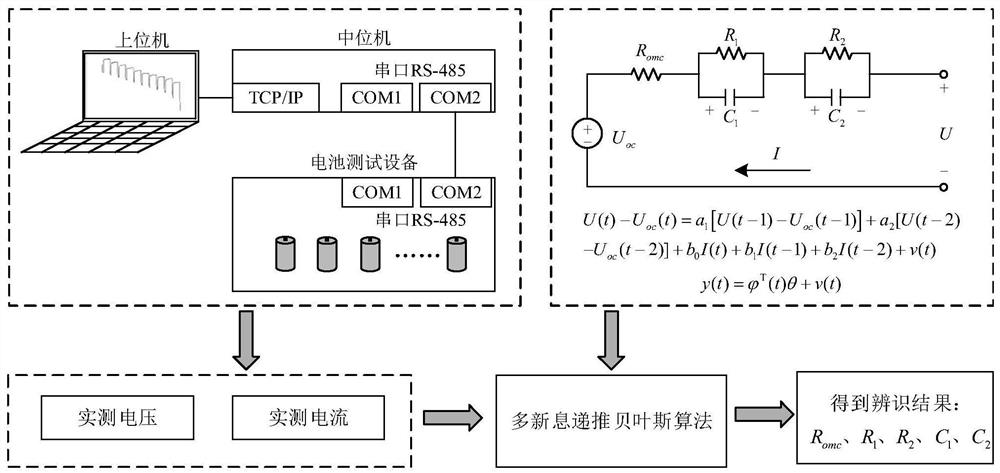A battery model parameter identification method based on multi-innovation recursive Bayesian algorithm
A Bayesian algorithm and parameter identification technology, applied in the field of lithium-ion batteries, can solve problems such as large amount of calculation and premature convergence, and achieve the effect of improving parameter estimation accuracy, high identification accuracy and small error
- Summary
- Abstract
- Description
- Claims
- Application Information
AI Technical Summary
Problems solved by technology
Method used
Image
Examples
Embodiment 1
[0095] see Figure 1 to Figure 9 , In this embodiment, the Panasonic lithium-ion battery NCR-18650B is used as the object of research, the nominal voltage is 3.7V, and the battery capacity is 3400mAh. The battery is charged to the cut-off voltage by constant current charging (0.5C), and the battery is fully charged after standing for 1 hour. The battery works in intermittent constant current discharge mode: discharge for 5 minutes, rest for 30 minutes, discharge current is 3400mA, discharge rate is 1C. This process is repeated until the voltage drops to the discharge cut-off voltage. Test voltage curve and current curve such as Figure 4 shown. The experiment verifies that the multi-innovation recursive Bayesian algorithm can identify each model parameter well, and the parameter estimation value of the algorithm remains relatively stable when the input current has unstable oscillations. In and out, the fluctuation is more obvious at the initial stage of identification, and...
PUM
 Login to View More
Login to View More Abstract
Description
Claims
Application Information
 Login to View More
Login to View More - R&D
- Intellectual Property
- Life Sciences
- Materials
- Tech Scout
- Unparalleled Data Quality
- Higher Quality Content
- 60% Fewer Hallucinations
Browse by: Latest US Patents, China's latest patents, Technical Efficacy Thesaurus, Application Domain, Technology Topic, Popular Technical Reports.
© 2025 PatSnap. All rights reserved.Legal|Privacy policy|Modern Slavery Act Transparency Statement|Sitemap|About US| Contact US: help@patsnap.com



